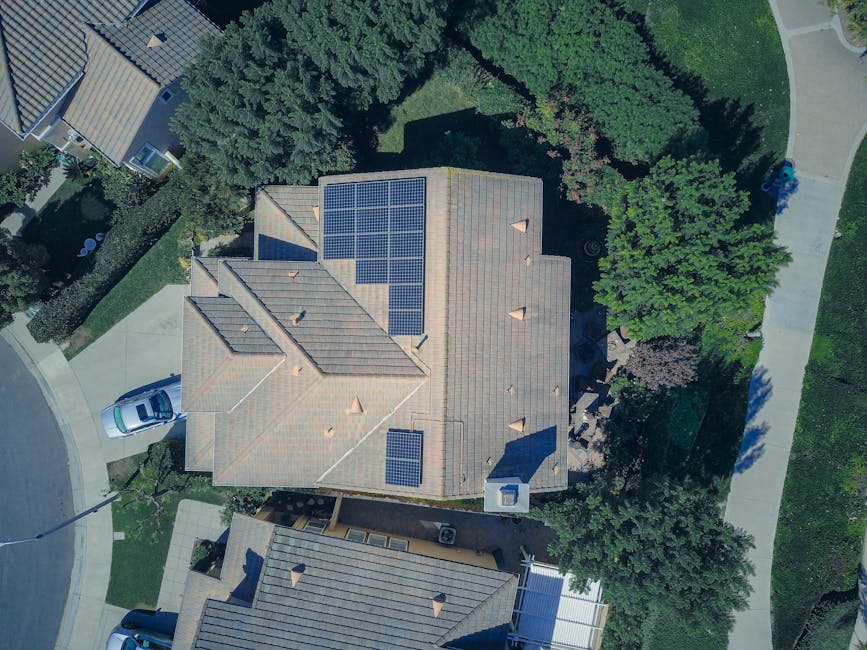Solar Powered Home Weather Station
In today’s world, where technology and sustainability go hand in hand, a solar-powered home weather station is an innovative solution for anyone interested in tracking weather conditions while being eco-friendly. This article will guide you through the benefits, components, and setup of a solar-powered weather station, making it easy for you to monitor the climate around your home. Let’s dive into the fascinating world of weather monitoring!
What is a Solar Powered Home Weather Station?
A solar-powered home weather station is a device that collects and records various weather data, such as temperature, humidity, wind speed, and rainfall, using solar energy. This means you can monitor the weather without relying on traditional power sources, making it an environmentally friendly option.
Why Choose a Solar Powered Weather Station?
There are several compelling reasons to opt for a solar-powered weather station:
- Eco-Friendly: Utilizing solar energy reduces your carbon footprint and promotes sustainability.
- Cost-Effective: Once installed, solar-powered stations have minimal operating costs since they don’t require electricity.
- Independence: You can place your weather station in remote areas without access to power outlets.
- Real-Time Data: Get instant updates on weather conditions, which can be crucial for gardening, farming, or outdoor activities.
Key Components of a Solar Powered Weather Station
Understanding the components of a solar-powered weather station is essential for selecting the right one for your needs. Here are the main parts:
- Solar Panel: Converts sunlight into electricity to power the station.
- Weather Sensors: Measure various weather parameters, including:
- Temperature
- Humidity
- Wind Speed and Direction
- Rainfall
- Barometric Pressure
- Data Logger: Records the data collected by the sensors for analysis and monitoring.
- Display Unit: Shows real-time weather data, either on a screen or via a mobile app.
- Wireless Connectivity: Allows you to access your weather data remotely through Wi-Fi or Bluetooth.
How to Set Up Your Solar Powered Weather Station
Setting up a solar-powered weather station can be a fun and rewarding project. Here’s a step-by-step guide to help you get started:
1. Choose the Right Location
Finding the perfect spot for your weather station is crucial. Consider the following:
- Avoid placing it near trees or buildings that can obstruct sunlight or wind.
- Ensure it’s at a height that can accurately measure wind speed and direction.
- Choose a location that is easily accessible for maintenance and data collection.
2. Assemble the Components
Follow the manufacturer’s instructions to assemble your weather station. This usually involves:
- Attaching the solar panel to the main unit.
- Connecting the weather sensors.
- Setting up the data logger and display unit.
3. Install the Weather Station
Once assembled, it’s time to install your weather station:
- Use a sturdy pole or mount to secure the station in place.
- Ensure the solar panel is facing south (in the Northern Hemisphere) for maximum sunlight exposure.
- Check that all sensors are positioned correctly for accurate readings.
4. Connect to Wi-Fi or Bluetooth
If your weather station has wireless capabilities, connect it to your home network or mobile device. This will allow you to access real-time data from anywhere.
5. Monitor and Maintain
Regularly check your weather station to ensure it’s functioning correctly. Clean the sensors and solar panel as needed to maintain accuracy and efficiency.
Understanding the Data Collected
Your solar-powered weather station will provide a wealth of information. Here’s a breakdown of the key data points:
- Temperature: Indicates the current air temperature, which can help you plan outdoor activities.
- Humidity: Measures the moisture content in the air, important for gardening and health.
- Wind Speed and Direction: Essential for understanding weather patterns and preparing for storms.
- Rainfall: Tracks precipitation levels, which is vital for agriculture and water conservation.
- Barometric Pressure: Helps predict weather changes, as falling pressure often indicates storms.
Benefits of Monitoring Weather Data
Having access to real-time weather data can be incredibly beneficial:
- Gardening: Helps you determine the best times to plant, water, and harvest.
- Outdoor Activities: Plan picnics, hikes, or sports events based on accurate weather forecasts.
- Disaster Preparedness: Stay informed about severe weather conditions to take necessary precautions.
- Climate Awareness: Gain insights into local climate patterns and changes over time.
Advanced Features to Consider
When choosing a solar-powered weather station, consider looking for advanced features that can enhance your experience:
- Smartphone App Integration: Access your data on the go and receive alerts for significant weather changes.
- Historical Data Analysis: Track weather trends over time to understand seasonal changes better.
- Customizable Alerts: Set notifications for specific weather conditions, such as high winds or heavy rainfall.
- Integration with Smart Home Systems: Connect your weather station to other smart devices for a fully automated home.
Conclusion
A solar-powered home weather station is an excellent investment for anyone interested in monitoring their local climate while promoting sustainability. With the ability to track various weather parameters, you can make informed decisions about gardening, outdoor activities, and disaster preparedness. By following the steps outlined in this article, you can set up your own weather station and enjoy the benefits of real-time weather data




